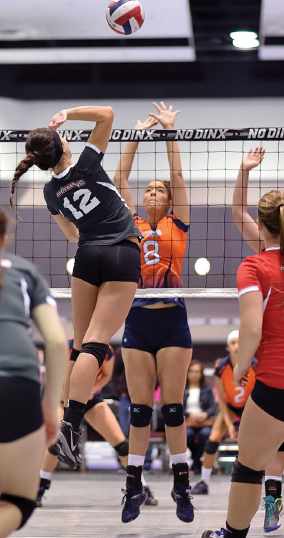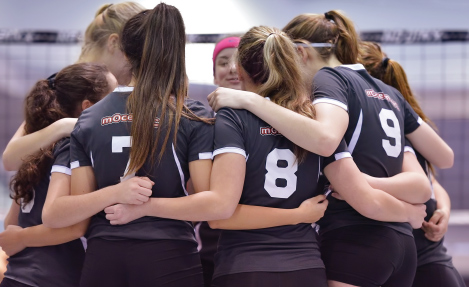|
The Great Divide By: Leon Blazer Originally Published: Coaching Volleyball
I saw it coming from a mile away, but I can't say I was ever ready for the question my club director asked just three months after starting as a Master Coach. The coach for their top 12s team stepped down for personal reasons, and some - how I was top of the list to take over those butterfly chasers. I took a week to think about it, and thought, if nothing else, it would be a learning experience to take the game back to where it all begins. Little did I know the impact it would have on me and the great need I saw at this developmental stage of the game. My road to coaching 12s was an interesting one. I was developing as a decent club coach in the Seattle area. I spent time attending Gold Medal Squared camps and UW women's volleyball practices, watching Jim McLaughlin train his team. I also spent countless hours working for and hanging out at Nevillizms, the training facility of Hall of Fame coach Bill Neville. I always felt that to be a great coach, you have to surround yourself with those who are great. It seemed like a natural step to move to college coaching when the opportunity presented itself. I spent the next four years as a college coach at Western Oregon and then UC Santa Barbara, working with some incredible head coaches. It was an amazing journey as a college coach, but after my last season at UC Santa Barbara, I knew it wasn't the best career path for my family or myself. My wife accepted a job in Houston and we found ourselves heading east. People around me asked what I would do in Houston. I knew that Texas was a prime spot for girls' volleyball, so I knew that at least I would be able to find a place to coach club. I reached out to several clubs in the Houston area. Houston Juniors was the first to get back to me. I set up a meeting to talk shop with the director and head trainers. I walked out with a coaching job and also started Blazer Media to handle recruiting videos for the club and other players in the area. I worked with the 12s group on occasion and my overall impression of 12s was off I think most coaches would agree that when we see 12-year-old volleyball, we cross to the other side of the street. I was no different. I just saw it as spider serving games, relay races, beach balls, butterflies and the constant parent's prayer of "Please God, help her get the serve over." What did I know about coaching girls under the age of 12? Not much, but my director (and her request) wasn't going away anytime soon. So I relented. I thought that if I was going to tackle this new adventure, then I would make it a learning experience. Far be it from me to lose the rest of my hair and not gain valuable insights that I can pass on to others. Simple, right? Enter my first set of test subjects. The top 12s group was talented, yet lacked discipline. Right from the start I had a list of rules and expectations that I would hold them to from day one. Instead of trying to learn how people coach 12s, I figured I'd coach them like I would a college team. We spent a lot of time ... uh ... conditioning at first, but slowly I noticed that they were learning the game of volleyball. They went from an average team in Houston, to fourth in the region and secured a bid to Junior Nationals after knocking off the region's top seed. With the conclusion of that season came the opportunity to direct the 12s age group. It would be three to four teams, and I would coach the top group. This would be my first chance to really test out some of my theories for training at this level and see if I could create a robust developmental program that would lead to future success in our older age groups. As I near the end of my second season as a 12s coach, I am delighted with some of the results I've been seeing. Everyone felt that my team would be decent this year, but no one would have predicted our results. I wanted to ultimately share some of my insights from working with this age group in hopes that it will help others in these shoes. Here are my 10 keys to being a successful U12 volleyball coach.
At the college level, you are looking for about a 1-to-1 ace-to-error ratio behind the serve line. This is not the case with 12s and is why I have come to emphasize serving as much as I do. With this new strategy, my current team has six players with better than a 4-to-1 ace-to-error ratio. Three of them are between a 5- and 6-to1 ratio, and consequently they are my first three servers. Serving has to have a purpose though. My players throughout the 12s program will never serve a ball unless it has a purpose. You have to get out of the habit of just rolling the balls onto the court and telling them to serve for five minutes. They will go back to chasing butterflies and not focus on serving. We also serve in every practice. I have a long list of serving games, drills and techniques that I rotate through to keep things interesting. One example is if we are serving for 10 minutes it is divided up as follows: • Two minutes - Just serve it in
Make sure your players develop a serving routine and stick to it. I learned this from Neville, who tells players to "Checklist their serve." There are four steps to a serving checklist: Routine, Look, Breath and Serve. They need to establish their routine. If a player spins the ball three times, bounces twice, then one more spin for good measure, they need to do that every time they serve the ball. Don't rush the process because in a game they have eight seconds to do their song and dance before serving. After that, players need to look where they are going to serve the ball. Watch how often they go from routine to just throwing in the air and making contact. What are the chances it goes over, let alone where you ask them to serve? The third is that they take a noticeable big deep breath. This helps clear the mind and get them focused completely on their next task. Final they need to go up and serve their best serve. We're not talking lollipops. Teach them to bring the heat with consistency. To sum up serving, here are my quick keys to developing great servers at 12: 1) They need to serve the ball at every practice. This goes beyond just serving in a drill. Create variety and pressure. 2 Butterfly, not butterflies 3 The only thing you can't do...tell a player what they can't do! On my current 12s team, the shortest and the tallest player on my team are my outside hitters. It's really kind of funny to watch. But neither of them started out there. My tall one was a middle blocker and was told that was her lot in life, and everyone thought my short one would be a libero for life. I gave them a chance and they are there because they are the best in that position. Now will that role change in time? It could. But far be it from me during this stage of development to tell them what they can't do. 4 Maintain high expectations 5 Don't hold them back But none of that showed up on the first practice. I had your typical bright-eyed, shy and, at times, unsure group of girls. I didn't start off the season thinking that I couldn't wait to get them doing combos, but I also wasn't going to be the one to hold them back from it. In saying that, I believe there is a process to it. Our more advanced offensive schemes haven't made it much out of the practice setting. We work on some of them so that they understand the concepts, but to spend the time needed to make it effective would take away from time spent on skills with a greater return on investment. We're not going to win games because we can run a slide effectively. It tends to be overkill at this age, but if I can send them to the 13s and 14s level already knowing these concepts, it frees those coaches to take them even further. To sum up this key, if you have players who can take it further, go there with them. They will enjoy playing the game at a higher level. 6 Be an example
The problem is the best player's obvious flaws are overlooked. We pass it off to next year's coach because we don't want to confront the best passer or hitter on our team. But what may work at 12 might not work at the older levels, let alone college. We assumed these things can work themselves out and we graduate these kids to the next age group and eventually they fizzle out because those little problems aren't so little anymore. That's on us. Do the work and demand the kids do things correctly. It won't hurt a kid to spend time every day on the wall to correct arm swing or contact. They'll thank you for it later. 8 Teach them to compete We were battling an in-region rival at the finals of the AAU Super Regional in Houston. The match was streamed online with commentary and I reviewed it sometime later. The tone of the commentary was comical as it moved from talking about how she loved the cute little girls with their ribbons and fancy socks to trying to contain her excitement at how skilled both teams were and how relentlessly they pursued the ball. This is where 12s are going, or can go, but you have to take them there. Skills and fundamentals are definitely part of the game, but so is competition. If the only time they compete is at tournaments, then you are not preparing your team effectively. As much as possible, add the element of competition to your drills. You can keep score on just about anything. Put something on the line so that they are able to track progress, and feel rewarded for their efforts to do well.
The same can be said for the younger age groups. People have asked what I would change with 12s versus college players. I said, "Nothing." The game is the game, and if they are going to grow in the sport to the point of playing in college, why not give them those tools early on? It isn't easy. I find more joy in a crying baby than teaching this age group about standard rotations and what an overlap is. But the reward is in seeing my 11-year-old setter pushing a middle blocker over three inches to not be overlapped. They have an immense capacity for understanding, and are sometimes only held back by the limitations us adults place on them. 10 Help them develop a love for the game Bonus Key: There is a lot of switching that happens in clubs. Houston Juniors has always been a place where older kids would go because the coaching was so strong in those age groups. We have been looking seriously at how we can develop our younger kids as well, and I believe having strong coaches in those positions is a great place to start. If you rely solely on transfers to supply your older teams, you never know who is going to show up. Why not invest the time and coaching into your developmental age groups so that you can know what you're getting year after year? In time, you will find your older coaches are spending less time fixing broken arm swings and more time developing elite teams. So there you have it. Again, this is my perspective on what I have learned over the past two seasons as a 12s coach. I'm sure there could be some debate on the subject, and I have seen several programs that have been run extremely well. But this is my journey, and I hope some of my insights might provide help or encouragement to those who are working this incredibly important age group. It has been a good journey from D1 to U12 coaching, and what has stuck with me the most is that The Great Divide is really quite small.
|



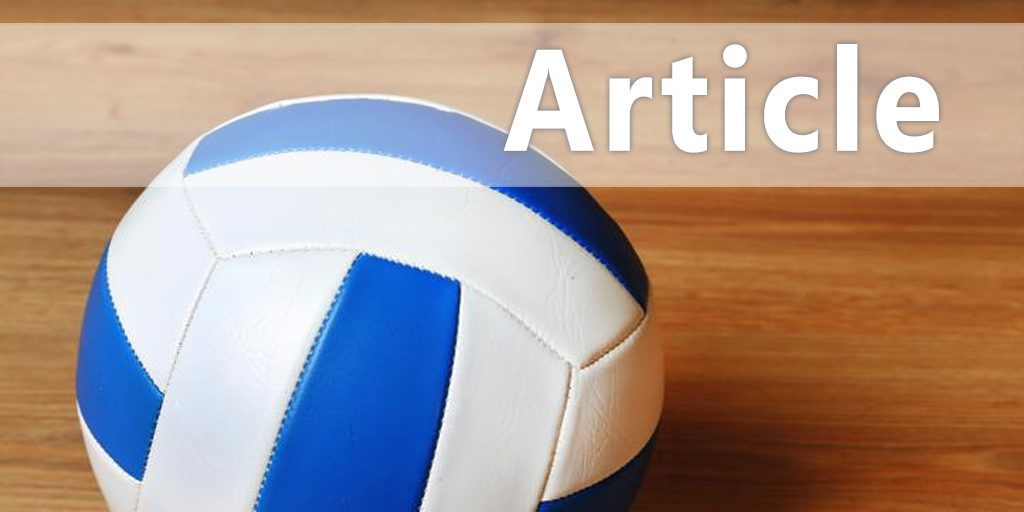
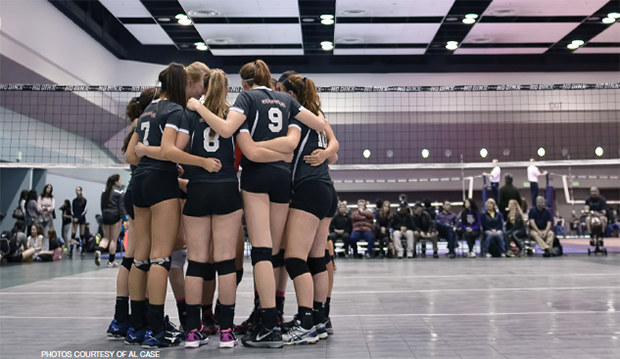
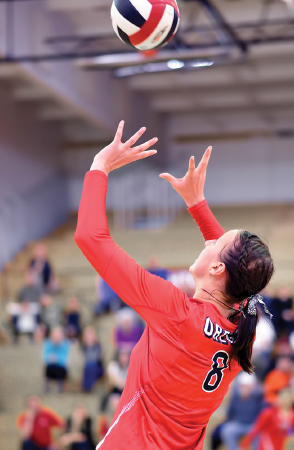
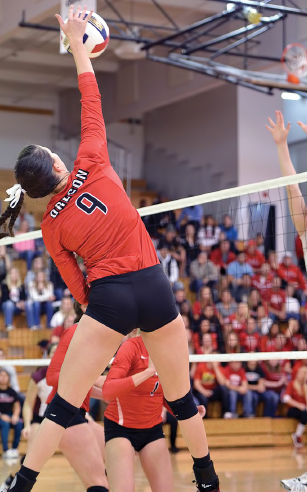 The key to developing great consistent servers is getting the serves in practice to imitate game-like situations. It's hard to simulate being down 21-24 in the second set and the pressure that goes along with it, but with careful planning, you can make a serve worth more. Play a drill out and to "cash in" the point, a player must go serve a ball in or to a designated zone. Have the team on the sideline and they have to run a touch 4 unless the player behind the line makes three in a row. There are ways to incentivize a server and you need to be creative in developing those situations.
The key to developing great consistent servers is getting the serves in practice to imitate game-like situations. It's hard to simulate being down 21-24 in the second set and the pressure that goes along with it, but with careful planning, you can make a serve worth more. Play a drill out and to "cash in" the point, a player must go serve a ball in or to a designated zone. Have the team on the sideline and they have to run a touch 4 unless the player behind the line makes three in a row. There are ways to incentivize a server and you need to be creative in developing those situations.